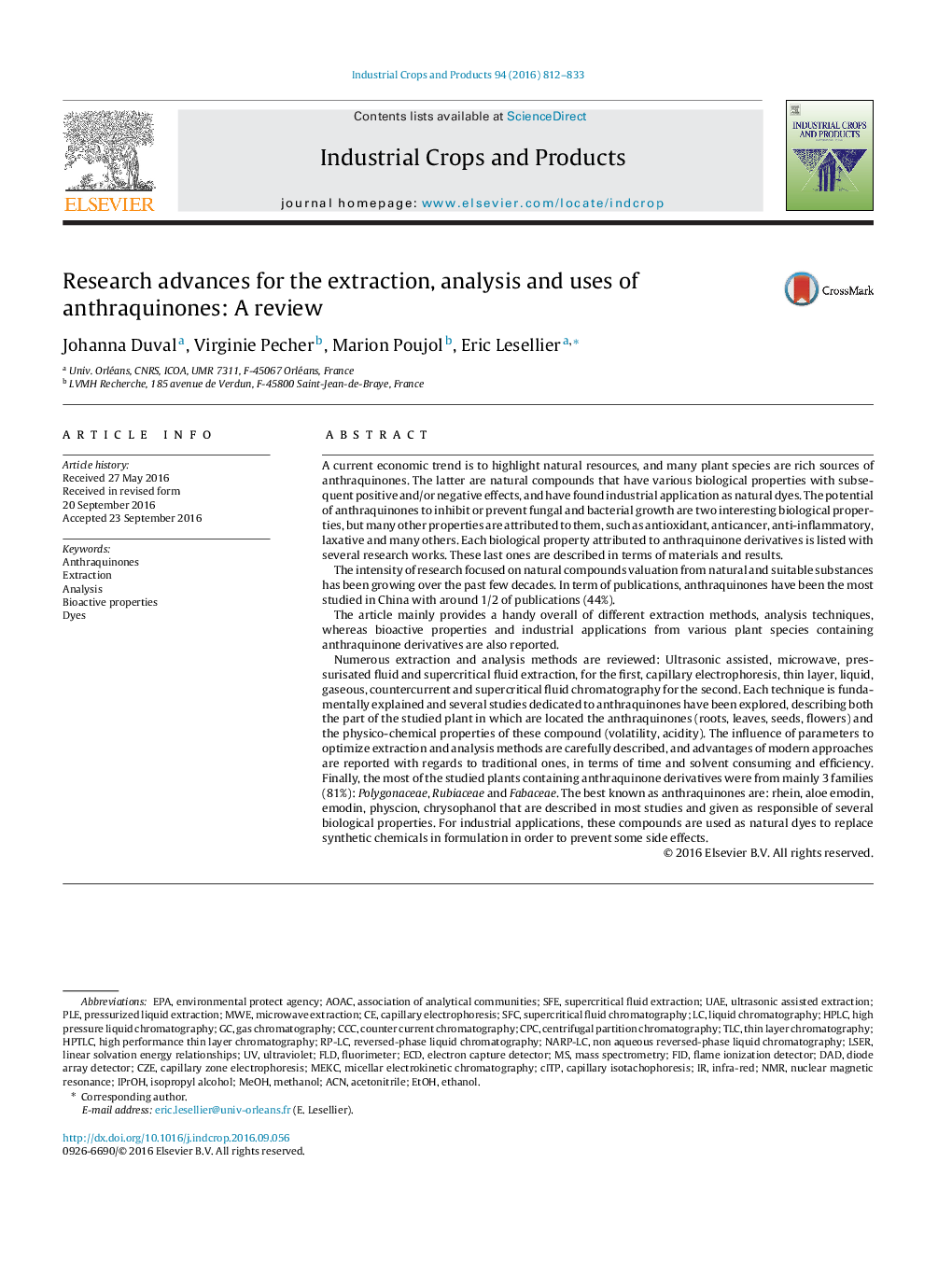| Article ID | Journal | Published Year | Pages | File Type |
|---|---|---|---|---|
| 6375435 | Industrial Crops and Products | 2016 | 22 Pages |
Abstract
Numerous extraction and analysis methods are reviewed: Ultrasonic assisted, microwave, pressurisated fluid and supercritical fluid extraction, for the first, capillary electrophoresis, thin layer, liquid, gaseous, countercurrent and supercritical fluid chromatography for the second. Each technique is fundamentally explained and several studies dedicated to anthraquinones have been explored, describing both the part of the studied plant in which are located the anthraquinones (roots, leaves, seeds, flowers) and the physico-chemical properties of these compound (volatility, acidity). The influence of parameters to optimize extraction and analysis methods are carefully described, and advantages of modern approaches are reported with regards to traditional ones, in terms of time and solvent consuming and efficiency. Finally, the most of the studied plants containing anthraquinone derivatives were from mainly 3 families (81%): Polygonaceae, Rubiaceae and Fabaceae. The best known as anthraquinones are: rhein, aloe emodin, emodin, physcion, chrysophanol that are described in most studies and given as responsible of several biological properties. For industrial applications, these compounds are used as natural dyes to replace synthetic chemicals in formulation in order to prevent some side effects.
Keywords
AnthraquinonesSFECCCEtOHACNLSERTLCECDDADAOACEPAFLDCITPRP-LCCZEMEKCCounter current chromatographyiPrOHMWEPLEHPTLCSFCCPCnuclear magnetic resonanceCapillary isotachophoresisdiode array detectorElectron capture detectorflame ionization detectorEthanolExtractionSupercritical fluid extractionPressurized Liquid ExtractionMicrowave extractionUltrasonic assisted extractionAcetonitrileUltravioletCapillary zone electrophoresisCapillary electrophoresisUAEAssociation of Analytical Communitiesisopropyl alcoholAnalysisNMRBioactive propertiesFIDDyesLinear solvation energy relationshipsMass spectrometryInfra-redMethanolMeOHMicellar electrokinetic chromatographythin layer chromatographyliquid chromatographyHigh pressure liquid chromatographyReversed-phase liquid chromatographySupercritical fluid chromatographyHPLChigh performance thin layer chromatographyCentrifugal partition chromatographyGas chromatography
Related Topics
Life Sciences
Agricultural and Biological Sciences
Agronomy and Crop Science
Authors
Johanna Duval, Virginie Pecher, Marion Poujol, Eric Lesellier,
